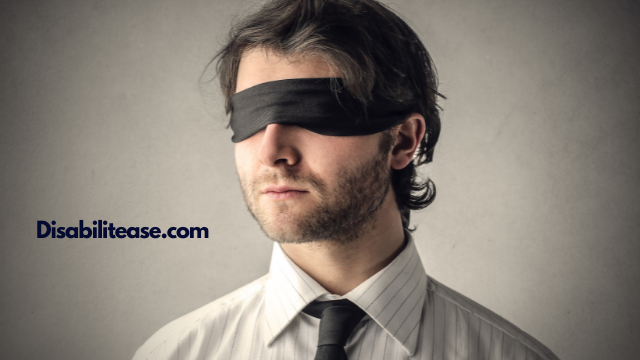Can a blind eye be fixed? Let’s find out? WHO statistics state around 285 million people worldwide have a visual impairment. Thirty-nine million people suffer blindness, and 246 million endure low vision. In fact that you are able to read this is a blessing itself.

Can a blind eye be fixed? The answer lies in the reason of vision loss and the extent of the damage which is irreversible. Although most eye diseases are curable, many still end in blindness.
Here is a related article that might interest you on the Best Fitness Trackers & Smartwatches For Elderly, Blind & Visually Impaired.
Losing any ability among the senses and specially vision haunts many. Although each sense has its importance but losing eyesight is considered to be the one that affects your life most adversely.
Table of Contents
What Is A Blind Eye? Can A Blind Eye Be Fixed?
The international classification of disease 11 divides vision impairment into two categories.
- Distance vision impairment
- Mild (visual acuity less than 6/12 – 6/18)
- Moderate (visual acuity less than 6/18 – 6/60)
- Severe(visual acuity less than 6/60 – 3/60)
- Blindness (visual acuity even more diminutive than 3/60)
- Near vision impairment
- Near vision less than N6 or M.08 when at 40cm.
Hence, there is a difference between impairment of vision, low vision, and blindness.
Is Blindness Treatable?
The answer lies in the reason of vision loss and the extent of the damage which is irreversible. Although most eye diseases are curable, many still end in blindness.
A Curable Blindness
A simple rule is that if damage or disease involves cornea, it has a high chance of getting cured; on the contrary, if the damage is done to the optic nerve or retina, it has decreased chances of getting cured.
- Refractive errors
Though it’s a common problem and is highly manageable, it can gradually cause impairment of vision and finally blindness if not treated.
Management: Contact lenses and Glasses with the correct number of lenses. If detected early and at the right time, the error is corrected by wearing the right number of lenses for some time.
- Cataract
Cataract remains the leading cause of blindness in both developed and third-world countries. According to a survey in 2020, only in the central European region, 52 thousand people suffered blindness due to cataracts, once an incurable disease, is now curable.
Management: Cataract surgery is the ultimate treatment, in which a new one replaces the old cloudy opaque lens. Most people end up in blindness because the surgery is expensive and unaffordable.
- Diabetic retinopathy
Diabetes affecting various body organs doesn’t spare the eye. It can damage the retina if Glucose levels are not maintained over time.
Management: Can be surgically corrected, keeping your blood sugar levels under optimum range, healthy diet, and exercise.
The Incurable Blindness
- Glaucoma
The fluid accumulation results in pressure accumulation and damage to the optic nerve. Although laser and medical therapy can slow down the progression, it usually ends up in blindness, becoming the second leading cause of blindness.

- Solar retinopathy
During the eclipse, intense wavelengths are released. Upon looking directly towards the eclipse, these waves can damage the retina leading to irreversible blindness.
- Macular degeneration
The macula is the blind spot of our eye present on the retina. As we grow old, it starts deteriorating like other tissue and organs. Although the deterioration can be delayed or prevented once it occurs, it becomes almost impossible to reverse the damage.
- Congenital condition
Any congenital condition such as retinitis pigmentosa, TORCH infections, or Anatomical abnormalities can cause blindness. They can be managed but not cured as they involve genetic involvement, or there is damage to the retina and optic nerve, which is irreversible at this time.
Also, make sure to check out my post on Can You Be Blind In One Eye?
New Advancements In Blindness Cure
- Corneal
There are many types of refractive surgery, such as PRK, radial keratotomy, and LASIK. LASIK is the one that has gained popularity and is widely used because of being less expensive in the long run and has positive results. It’s used only for those who had failed with the regular treatment and their vision worsened, making them legally blind.
- Corneal Transplant
Damaged corneas can lead to blindness and are the leading cause of vision impairment. Thank the medical science and its advancement, the entire cornea can be transplanted to restore eyesight. It’s been around for years and has provided with many successful restoration of vision.
- Stem Cell Therapy
Stem cells are baby cells that can mature into any cells. These can be used to be coaxed into retinal cells. These retinal cells can be transplanted, and the damaged retinal cells can be replaced with healthy new cells.
- Retinal Prosthesis
Retinal prosthesis via Argus II can be used for restoring vision. A camera is connected to a pair of glasses that transfers the information to a connected chip. This chip transforms the electrical signals into light to the optic nerve, and the patient can see visual information through flashes of light. The idea here is to bypass the damaged retina.
- Vitrectomy
This procedure is used to restore the eyesight in legally blind people, completely restoring vision, and is usually done in patients losing eyesight,y suddenly due to an accident. In such cases, the success rate depends on the loss of sight and after how many months the surgery is done.
- Optogenetics
Optogenetics is successful in conditions where the damage to photoreceptors causes blindness. Such as AMD and RP. In this, the healthy retina is used to connect ganglion cells to make a direct flow of information to the brain’s visual cortex.
- Gene Therapy
Affective for blindness caused by abnormal or mutated genes. One of this is Retinitis Pigmentosa.
- Brain Transplant
Utilizing the phosphenes ( random flashes of lights blind people see), the ideology here is to directly transfer the required information to the brain’s visual cortex. The aim here is to provide a helpful vision rather than the real vision, which seems impossible.
Conclusion
It is a dream of scientists and doctors to restore the vision of blind people, which is considered no less than a miracle.
Although today blindness is treatable depending upon its cause and extent of damage, certain new advancements are in the way, and maybe in the future, blindness will be 100% treatable.

Hi, my name is Eddie, I am a professional trainer specializing in the elderly population and I’m also a website designer. I love training in the gym, going to the beach, traveling, and having good food.
I combined my love for sport and website designing to make “DisabilitEase” whose purpose is to help elderly and disabled people live a more full and active life, have more fun, and enjoy their unique journey despite any disability.



